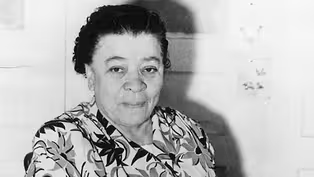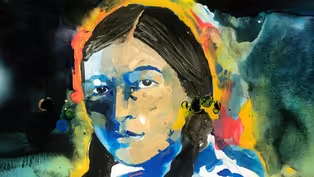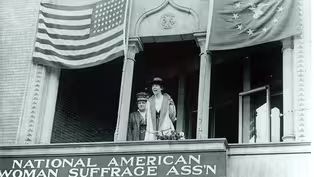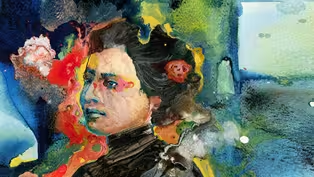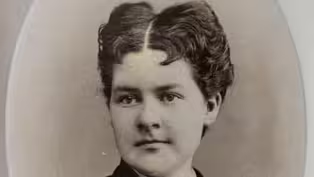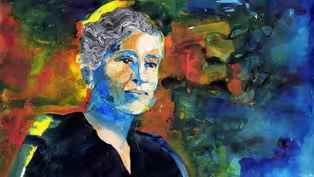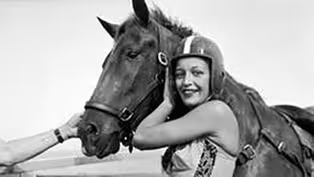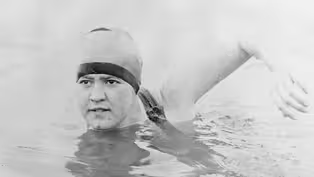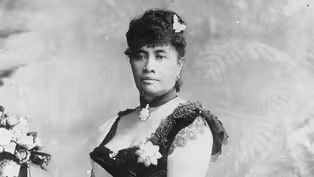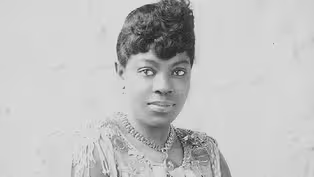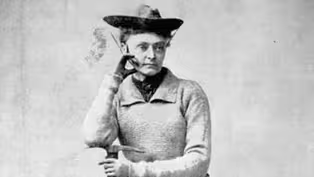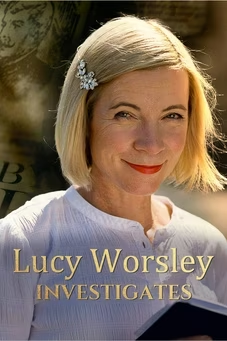
Meta Warrick Fuller: Trailblazing African American Sculptor
Special | 11m 25sVideo has Closed Captions
Meta Warrick Fuller celebrated African American cultural identity through her artwork.
Artist Meta Vaux Warrick Fuller moved to Paris from Philadelphia in 1899 to study sculpture, where she began creating her expressive and groundbreaking artwork, which celebrated African American heritage and cultural identity, and resisted stereotypical representations in her depictions of the black body. She was the first African American to be awarded a federal art commission.
Problems playing video? | Closed Captioning Feedback
Problems playing video? | Closed Captioning Feedback
Support for American Masters is provided by the Corporation for Public Broadcasting, AARP, Rosalind P. Walter Foundation, Judith and Burton Resnick, Blanche and Hayward Cirker Charitable Lead Annuity Trust, Koo...

Meta Warrick Fuller: Trailblazing African American Sculptor
Special | 11m 25sVideo has Closed Captions
Artist Meta Vaux Warrick Fuller moved to Paris from Philadelphia in 1899 to study sculpture, where she began creating her expressive and groundbreaking artwork, which celebrated African American heritage and cultural identity, and resisted stereotypical representations in her depictions of the black body. She was the first African American to be awarded a federal art commission.
Problems playing video? | Closed Captioning Feedback
How to Watch American Masters
American Masters is available to stream on pbs.org and the free PBS App, available on iPhone, Apple TV, Android TV, Android smartphones, Amazon Fire TV, Amazon Fire Tablet, Roku, Samsung Smart TV, and Vizio.
Buy Now
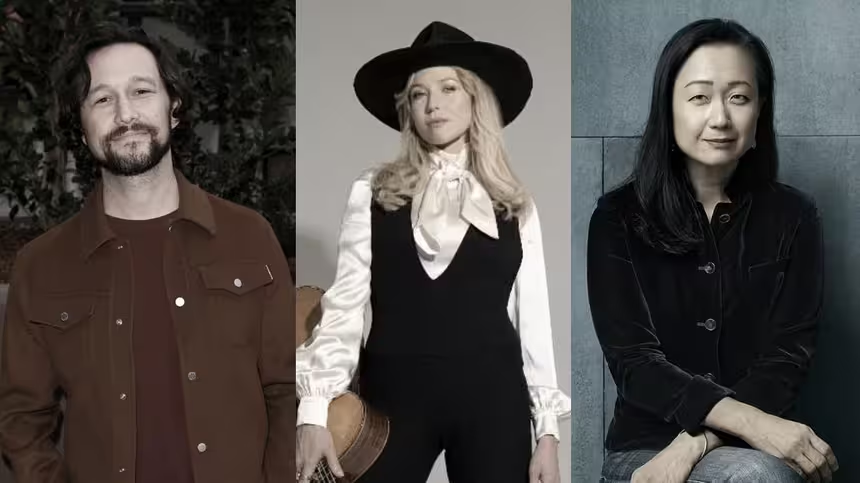
A front row seat to the creative process
How do today’s masters create their art? Each episode an artist reveals how they brought their creative work to life. Hear from artists across disciplines, like actor Joseph Gordon-Levitt, singer-songwriter Jewel, author Min Jin Lee, and more on our podcast "American Masters: Creative Spark."Providing Support for PBS.org
Learn Moreabout PBS online sponsorshipMore from This Collection
Illuminating the stories of extraordinary American heroines from the early years of feminism, American Masters — Unladylike2020 presents 26 digital short films featuring courageous, little-known and diverse female trailblazers from the turn of the 20th century.
The First Black Woman to Run for Vice President of The U.S.
Video has Closed Captions
Charlotta Bass was the first Black woman to run for Vice President of the United States. (12m 32s)
Zitkála-Šá: Trailblazing American Indian Composer and Writer
Video has Closed Captions
Zitkála-Šá co-composed and wrote the libretto for the first American Indian opera. (11m 39s)
Jeannette Rankin: The First Woman Member of U.S. Congress
Video has Closed Captions
Jeannette Rankin made history as the first woman elected to the U.S. Congress. (12m 38s)
Jovita Idar: Mexican American Activist and Journalist
Video has Closed Captions
Jovita Idar was a Latina journalist who worked for an end to segregation and racism. (11m 8s)
Martha Hughes Cannon: The First Woman State Senator
Video has Closed Captions
Martha Hughes Cannon was a historic state senator and public health pioneer. (12m 23s)
She was a Civil Rights Activist and Co-Founder of the NAACP
Video has Closed Captions
Mary Church Terrell was a suffragist, civil rights activist and co-founder of the NAACP. (11m 53s)
She was a Daredevil Performer & Advocate for the Blind
Video has Closed Captions
Sonora Webster Carver (1904-2003) was one of the most famous horse divers in the world. (10m 2s)
She was the First Woman to Swim Across the English Channel
Video has Closed Captions
Gertrude Ederle made history in 1926 as the first woman to swim across the English Channel (11m 54s)
Queen Lili‘uokalani - The First and Last Queen of Hawai‘i
Video has Closed Captions
Queen Lili‘uokalani was the first sovereign queen, and the last monarch of Hawai'i. (12m 14s)
Sissieretta Jones was a Trailblazing Black Opera Singer
Video has Closed Captions
Sissieretta Jones was the first Black woman to headline a concert at Carnegie Hall. (11m 5s)
The First American Indian Doctor
Video has Closed Captions
Susan La Flesche Picotte became the first American Indian woman doctor. (11m 37s)
Annie Smith Peck: Record-Breaking Mountaineer
Video has Closed Captions
She was a record-breaking mountaineer, educator and suffragist. (10m 40s)
Providing Support for PBS.org
Learn Moreabout PBS online sponsorshipMeta Warrick Fuller was really an important artist, at a time where not many African American sculptors were telling their own stories.
Meta's work is passionate, it's daring.
1899.
Paris, France.
22-year old Meta Warrick Fuller arrived alone from the U.S. to attend art school.
She was restricted from access in the U.S. from predominantly all white academies.
This is why she goes to Paris.
There are not a lot of African American women who are doing this in the late 19th, early 20th century.
It's arranged that she will go to the American Girls Club to find residence there.
But she's denied the minute she shows up at the door.
"The director said, 'You didn't tell me that you were not a white girl!'
I said, 'I was told that the Club was here for American girls who came to Paris to study - and I felt that I, as an American girl, was entitled to come.'"
Warrick Fuller found her own apartment and enrolled in art school.
Meta was shocked to encounter American style racism in Paris.
But that defining moment forced her to become independent and to become more fully an artist.
Meta Warrick Fuller was born in 1877 to a middle class family in Philadelphia, Pennsylvania.
Her father owned his own barber shop, and her mother was a hairdresser.
And they were able to provide her with activities that were fairly unusual for most black kids growing up in the United States- music and dance classes, art making classes.
"My father and I went to art exhibitions and together we lived in the pictures we saw, and the sculptures overwhelmed us."
Fuller was very interested in work that can convey deep emotion and kind of the psychological interior.
Particularly as a teenager, she was interested in ghost stories and tales of horror.
"This was the food upon which my imagination thrived."
Warrick Fuller was studying in Paris, when a world's fair opened in 1900.
World fairs were places that African Americans felt they could set the record straight about their education, their contributions to literature, to the arts, to music.
The organizers of the American Negro exhibit - including noted scholar W.E.B DuBois, one of the founders of the NAACP - invited Warrick Fuller to create displays celebrating black history.
She starts out as a young artist, and right away she makes this important connection with W.E.B DuBois.
He becomes someone who will promote her career.
They assembled dioramas that were scenes of black life, and statistical information to prove the advancement of the black race.
In Paris, Warrick Fuller also met the country's leading sculptor, Auguste Rodin.
He takes her around his studios.
She sees his plaster casts of body parts and she is floored by this experience.
He is downright influential on her work- that interest in the interior life, but also in the artist's hand being present in the materials, is something she fully understands from Rodin.
"Rodin is the master of them all.
My heart went out and with clenched fists, I determined to fulfill my promise."
Warrick Fuller's work was shown in three major exhibitions in Paris, including one at the students club, which rejected her three years prior.
She is the only American sculptor that is called out in the French press for her kind of amazing work.
And she's called "the sculptor of horrors" because she is creating small scale objects that show the deepest, darkest emotions that we can have.
"My work is of the soul, rather than the figure, and sometimes the figure must be very crude in order to carry the full strength of the spiritual meaning."
She's able to convey so much emotion and power in these figures, simply by a turn of the head or a tilt of the hip.
She's a real incredible and unique talent in that respect.
My name is Alison Saar, and I'm an artist.
I really enjoy the transformation of materials.
Such a huge part of sculpture is actually physically being able to experience it through touch.
When I was growing up, it was pretty few and far between that we could see an exhibition of an artist of color, and more so of even women artists.
Being a sculptor and working with things like chainsaws and rusty tin definitely wouldn't have been considered ladylike then.
Sculpture has always been a man's world, all the schools I went to, all the sculpture teachers were male.
It was very macho.
So, it was a difficult trail to pursue.
Warrick Fuller returned to Philadelphia.
Despite her success abroad, she was ostracized from the white male dominated art scene.
Once she walked into that gallery space as a black woman, the racism just was enacted almost immediately.
"There were many disappointments when I tried to sell work, but I resolved to work at all odds and continue to create."
In 1907, Warrick Fuller became the first African American woman to receive a federal art commission, when DuBois invited her to mark the 300th anniversary of the Jamestown Virginia Settlement.
It was a very complicated situation.
African Americans were not allowed to attend during regular hours.
There would be what were called 'Negro days.'
But she showed at this fair and won a prize for these dioramas about progress.
She's not stereotyping.
She's not resorting to those early 20th century images of the mammy or Uncle Tom.
She's trying to offer an alternative vision about blackness.
"I was anxious to do the work because I loved it, and because it was an opening for me."
She met Solomon Carter Fuller, the first person of African descent to practice psychiatry in the U.S.
They married in 1909, set up a home in Framingham, Massachusetts, and had three sons.
Her husband wanted her to be a mother and a wife first.
He was not interested in her pursuing her art career full time.
She had to carve out a space in her attic where she continued to create.
Warrick Fuller later secretly built herself a studio near their home.
In 1910, a fire broke out in the warehouse where she stored her work.
Sixteen years of her art was destroyed.
Most of her work from Paris does not remain because it was destroyed in this fire.
She must have been just heart sore at the loss of this collection.
"This morning I got up feeling so blue.
It is awful to feel you have power you cannot make use of."
In 1913, Fuller was commissioned to create a sculpture for the 50th anniversary of the abolishment of slavery.
She creates a statue of two figures, a man and a woman.
They are semi nude, and they are not being liberated by Abraham Lincoln or a former owner.
They're self liberating.
She was radical during her time period for taking up the black body in sculpture.
My monument for Harriet Tubman in Harlem is probably the most prominent.
I have embedded in her skirt various objects that would belong to passengers on the underground railroad - what few things you could actually carry while trying to escape slavery.
And then coming out of the back of her skirt are these roots, which symbolize her role in uprooting slavery.
I'm really interested in these strong African American female figures who have historically held up the world.
Warrick Fuller sculpted her most well known public work for a 1921 exhibit in New York.
She created this statue to represent the awakening of black people.
"Here was a Negro, gradually unwinding the bandage of its mummied past and looking out on life again, expectant but unafraid."
As the health of her husband declined, he insisted she gave up her art career.
"I have given up everything to look after him.
I had hoped to leave behind work that would have meaning to the coming generation, but that is all over now."
Despite her personal disappointments, Warrick Fuller was considered a forerunner of the Harlem Renaissance, an artistic and intellectual awakening among African Americans in the 1920s.
Meta becomes a model for other women sculptors - Augusta Savage, Nancy Elizabeth Prophet, are looking to Fuller as a model of a African American woman sculptor who had made it in the early part of the century.
After her husband's death, Warrick Fuller, now in her 70s, returned to making art intermittently.
Writing poetry, often of a religious nature became her new passion.
"Wait reverently and have no fear.
The hand which fashioned you is gentle and will guide with loving care."
Warrick Fuller died in 1968 at age 91.
Three decades later, "Emancipation" was cast in bronze and installed as a public monument in Boston's Harriet Tubman Square.
I imagine myself and other women of color working in sculpture are all part of this legacy, starting with her, and it would be really nice to think that she's going to continue to influence other young female artists yet to come.
"The Negro possesses as much artistic ability as any other group of Americans.
Despite the many hindrances, much has been accomplished in which we may take pride."
Support for PBS provided by:
Support for American Masters is provided by the Corporation for Public Broadcasting, AARP, Rosalind P. Walter Foundation, Judith and Burton Resnick, Blanche and Hayward Cirker Charitable Lead Annuity Trust, Koo...

